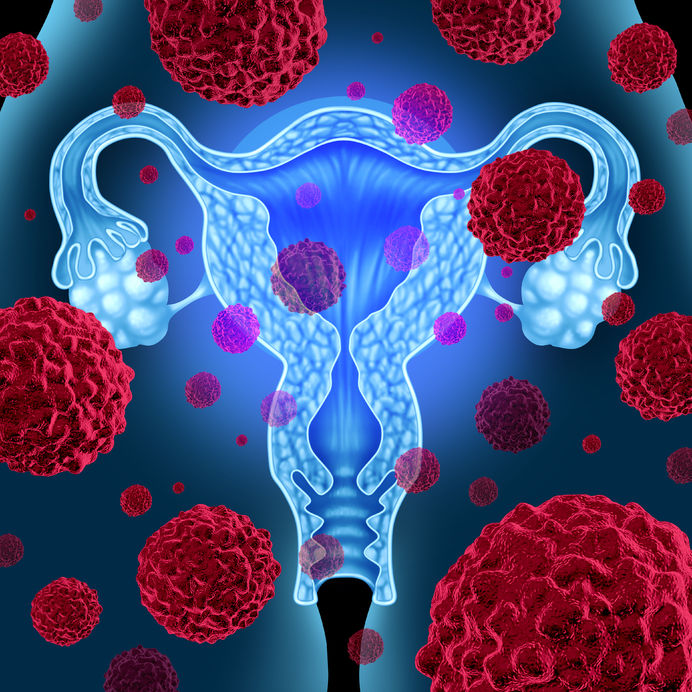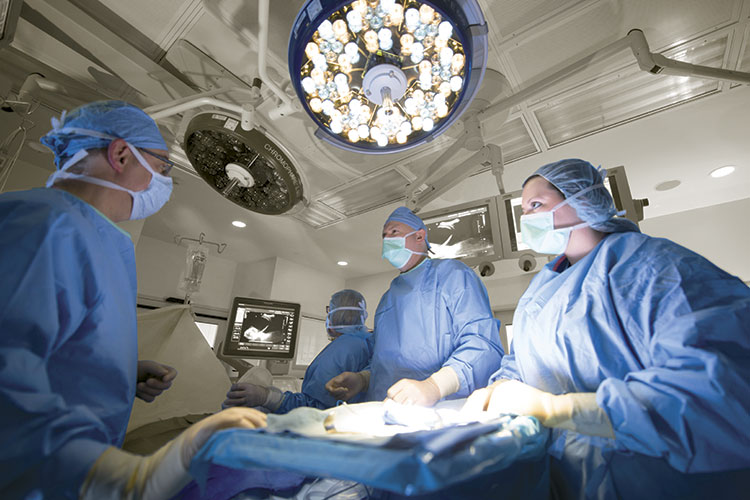Some women confuse uterine dysplasia with erosion. However, these are two completely different diseases, each of which is dangerous in its own way. Unlike erosion, moderate dysplasia disrupts the multilayer structure of the epithelium. During the examination, pathologically altered cells are detected.
By their nature, they are not malignant, but if treatment is not done in a timely manner, they quickly turn into cancer. A similar disease has several stages, each of which has its own peculiarity. The most dangerous is the very last stage, since the area of its defeat covers almost the entire structure of the epithelium.
The timely detection and treatment of the disease has a pretty good prognosis. If the pathology is started, then complications can be very dangerous.
Features of the disease
What is mild cervical dysplasia? This question is of interest to many women who have been given this diagnosis. This is a serious pathology in which the epithelial layer lining the uterus undergoes changes that occur at the cellular level. In this case, the cells change their structure and are prone to pathological growth with subsequent disruption of normal functioning.

During the course of the pathology, the existing violations acquire a global character, spreading to adjacent tissues.
The result of this structural change is called mild dysplasia. This is a fairly common problem and it is identified annually in many women, which is why it is important to conduct preventive examinations to detect it in a timely manner.
Leakage features
Moderate cervical dysplasia is characterized by the fact that it affects 2/3 of the epithelial layer.
Cellular changes progress not only on the surface, but also on the intermediate layers. This form is dangerous in that it can quickly proceed to stage 3 with subsequent degeneration into a malignant neoplasm.
Causes of occurrence
The timely detection of a moderate degree of dysplasia and its complex treatment has a pretty good prognosis. At this stage of the course of the disease, the first signs of a violation already appear. It is worth noting that under favorable conditions and maintaining immunity at the required level, a moderate form of dysplasia can independently regress.
The causes of moderate dysplasia are fairly well understood. This is a combination of several factors that provoke the onset of pathology. The main reason is the human papillomavirus. In itself, it is not a sufficient factor, however, when combined with others, it leads to the onset of the disease. The papilloma virus is sexually transmitted and, with normal immunity, the infection is destroyed on its own within 1.5–2 years.
The risk of developing moderate dysplasia increases many times in the presence of additional provoking factors, namely:
- weakened immunity;
- hormonal imbalance;
- diseases of the genitourinary system;
- frequent pregnancy;
- early onset of sexual activity;
- avitaminosis;
- genetic predisposition;
- bad habits.
In addition, the risk of developing a disease with cervical erosion significantly increases. Papilloma virus is especially dangerous in combination with other infections, such as HIV or herpes.
Main symptoms
Symptoms and signs of moderate cervical dysplasia are almost absent. It is worth noting that in some cases, the asymptomatic course of the disease can continue to the last stage. In approximately 10% of cases, this pathology is detected by accident, during a routine examination.

The main signs of moderate dysplasia of the uterus will be the presence of secretions, as well as pain during sex. After sexual contact, there may be discharge with streaks of blood. All these symptoms are not clearly expressed, so many women do not pay attention to them. Often with dysplasia, signs of concomitant diseases are disturbing . The main complaints in this case will be:
- bleeding
- infertility;
- menstrual cycle changes;
- itching
- infertility;
- discharge;
- pain in the lower abdomen.
However, all these complaints appear periodically, and may even be absent. During the examination, the doctor can detect signs of pathology even in the initial stages.
Diagnostics
In the diagnosis of moderate uterine dysplasia, a variety of methods are used that help determine the presence of a problem. Initially, the gynecologist examines the cervix using vaginal mirrors. This makes it possible to detect clinically pronounced forms of dysplasia. In addition, such methods as are used for diagnostics:
- colposcopy;
- cytological and histological examination;
- immunological PCR methods.
Colposcopy involves examining the cervix with a colposcope. This is an optical device that enlarges the image. At the same time, diagnostic tests are performed. Such a technique allows you to determine the course of the pathology even if the woman does not bother anything or the symptoms are blurred.
With dysplasia, a cytological examination of the smear is prescribed under a microscope. This method allows you to detect the presence of atypical cells. Markers of papillomavirus infection are also found. This is a rather informative method that helps determine the methodology of therapy and establish a strain of the virus.
The histological research method allows you to determine the degree and nature of the pathology, as well as confirm or refute the development of dysplasia into a malignant neoplasm. It is recommended that all women after 40 years undergo such an examination. Additionally, a detailed blood test and hormones can be prescribed. If cancer is suspected, a biopsy is prescribed, which involves taking a piece of tissue.
Treatment features
Treatment of moderate cervical dysplasia largely depends on the characteristics of the pathology, the age of the woman and other factors. Without timely complex therapy, there is a high probability of transition to a malignant tumor.
In some cases, there may be an independent regression of pathology. If there is trichomoniasis, chlamydia or gonorrhea, then it is necessary to conduct a comprehensive treatment. After 3-6 months, the smear should be repeated. If the changes have not disappeared or a worsening of the condition is observed, then conservative therapy is prescribed.

In especially severe cases with moderate epithelial dysplasia, treatment is carried out with various surgical methods. For this, mainly methods such as:
- laser therapy;
- cryosurgery;
- loop electroexcision;
- excision of altered tissues;
- removal of the uterus along with the cervix.
The latter method of operation is used very rarely, in the most advanced cases, when the pathology threatens the patient's life.
Drug therapy
Initially, the doctor prescribes medication for moderate dysplasia. For the treatment prescribed:
- anti-inflammatory drugs;
- suppositories against the HPV virus;
- immunostimulants;
- vitamin complexes;
- drugs to eliminate endocrine disorders.
Anti-inflammatory drugs are selected depending on the pathogen detected. Medicines are used in the form of suppositories or tablets. Injections of antibacterial agents may also be required.

Anti-inflammatory therapy is prescribed for all patients with dysplasia, regardless of the causes of its occurrence. And during the treatment, the doctor prescribes suppositories against the HPV virus, in particular, such as “Acidum nitricum” or “Papillocan”. These products have a high degree of effectiveness, despite the fact that they contain mainly plant components.
Additionally, drugs may be required to increase local immunity, namely suppositories with bifidobacteria and lactobacilli. For example, such products as Lactovag, Ginolact, and Atzilact have worked well. To increase the general immunity, “Prodigiosan”, “Isoprinosine” or “Interferon” are prescribed.
As part of complex therapy, vitamin-mineral complexes are used, as well as drugs designed to correct endocrine disorders. To stimulate the growth and renewal of healthy cells, “Methyluracil” ointment is prescribed.
If dysplasia was triggered by age-related changes, then use "Ovestin" to stimulate the production of estrogen. The treatment of the damaged mucosa is carried out on an outpatient basis.
With the occurrence of moderate dysplasia of the epithelium, methods of conservative therapy help to stabilize the condition and get rid of concomitant diseases. In addition, the use of contraceptives is mandatory to prevent pregnancy.
Modern techniques
With the failure of conservative therapy and a sharp deterioration in well-being or the detection of pathology at later stages, operational methods are used. With moderate dysplasia of the epithelium, the intervention is carried out to the extent required by the clinical picture. If possible, doctors prescribe modern hardware techniques that help eliminate pathology, these include:
- electroconization;
- moxibustion
- radio wave treatment;
- photodynamic therapy;
- cryodestruction;
- laser removal.
Electroconization refers to one of the methods of performing an operation, which implies the complete removal of pathology. In modern surgery, a variety of tactics of cervical conization are used. It can be performed using a special apparatus, a scalpel or a laser beam.
Moderate focal dysplasia is treated with cauterization. This method is affordable, simple and effective. The affected area is cauterized by applying a low voltage current, as a result of which all atypical cells are destroyed. The disadvantages of this technique include the formation of scars, as well as the inability to accurately adjust the depth of exposure to the affected tissue.
With tubular adenoma with moderate dysplasia, radio wave treatment is used. The impact on the pathological focus is betting using high-frequency waves. It is recommended to be used to treat women of reproductive age, since reproductive function does not suffer. The pluses should also include painlessness, quick healing and the ability to control the intensity of exposure.
The cryodestruction method involves the removal of moderately severe dysplasia with liquid nitrogen at low temperatures. This is one of the most modern methods, which allows you to quickly and painlessly eliminate the pathological focus.
With tubular adenoma of the colon with moderate dysplasia occurring in a precancerous condition, with an extensive lesion, photodynamic therapy is used. The principle of operation of this technique is to irradiate the tumor.
These treatment methods allow you to maintain reproductive function and do without uterine resection.
Operation
With moderate dysplasia of the squamous epithelium, proceeding in a neglected form, or if it threatens with a transition to a malignant tumor, an operation to remove the uterus can be prescribed. Indications for its implementation are:
- significant area of damage;
- transition to a malignant form;
- the inability to eliminate the pathology by other methods;
- the presence of concomitant diseases.

For patients of childbearing age, this treatment option is used very rarely, only with moderate severe dysplasia. Mostly doctors try to maintain reproductive functions.
The use of folk techniques
With dysplasia of the cervix, folk methods have proven pretty good, however, they can be used as auxiliary methods only after consulting a doctor. In addition, be sure to clearly follow the instructions for the preparation and use of these funds.
The use of herbs and fees must necessarily be combined with medications, as only this will ensure a guaranteed good result.
Brew 1 tbsp. l dry celandine in 1 tbsp. boiling water, let stand so that the liquid turns light brown. Filter, soak the swab and insert it into the vagina. If dysplasia occurs against a background of candidiasis or adnexitis, then this infusion should be douched.
You can use celandine oil. The method of cooking it is the same as the infusion, only vegetable oil is used instead of water. You can use the finished product after 4-6 hours. Soak swabs in oil and inject them into the vagina at night. It is possible to carry out treatment with celandine based products for no more than 2 weeks.
With the occurrence of acute inflammation, after childbirth and during pregnancy, it is not recommended to use folk remedies for treatment.

Consequences and Complications
The prognosis for cervical dysplasia is directly related to the existing symptoms, the patient’s well-being, as well as the presence of concomitant diseases. In some cases, an independent cure and a complete regression of the disease are possible.
Without timely detection of the disease and complex treatment, it is quite possible to switch to a malignant form within a year. In addition, the asymptomatic course of the pathology and the absence of visible manifestations for a long time are very dangerous. This can lead to dysmenorrhea, infertility, as well as cancer pathology. To prevent complications, conization may be required. Surgery may result in changes such as:
- bleeding
- a large number of secretions with an unpleasant odor;
- scarring;
- impaired reproductive function;
- temperature rise;
- sharp pain.
If the papilloma virus is not eliminated, then a relapse of the disease after treatment is possible. In addition, inflammation of the vagina, anal passage can further develop.
The course of the disease during pregnancy
With dysplasia of the cervix, it is quite possible to become pregnant and with the course of the disease the life and health of the baby are completely in danger.
With the occurrence of stage 2 pathology, regular monitoring by a gynecologist and independent delivery are recommended. Such patients have every chance of subsiding the disease with subsequent regression.
With very rapid progression, a conization operation may be prescribed followed by suturing. This is to prevent spontaneous abortion and premature birth. Even after the intervention, there is the possibility of delivery without cesarean section.
The condition during pregnancy can be static, so treatment is postponed until the postpartum period. There is a certain risk of infertility, but it is mainly associated with other gynecological problems. As experts say, if moderate dysplasia arose due to hormonal imbalances, then pregnancy will be a kind of therapy.
Power Features
With cervical dysplasia, it is imperative to adjust the menu and introduce products in your usual diet that will help cope with vitamin deficiency. It is also recommended to supplement the menu with cabbage and foods rich in folic acid. Vitamins must be ingested regularly and in sufficient quantities.
A diet based on vegetables and fruits is recommended. Reduce your intake of carbohydrates and fats. As a source of animal protein, it is recommended to consume low-fat varieties of meat, fish, pork liver. It is also important to abandon carbonated and alcoholic beverages, coffee and tobacco.
Prophylaxis
As a prophylaxis, vaccination should be carried out in order to protect against infection with the most dangerous strains of the papilloma virus. Vaccination is indicated not only for women, but also for men who can be carriers of this virus. However, it is worth remembering that vaccination cannot protect against dysplasia. As a prophylaxis, you need:
- give up smoking;
- start sex after 18 years;
- Maintain monogamous and practice safe sexual relationships.

Periodically, you need to test for the papilloma virus. If he revealed changes, you need to repeat it after 6-12 months, and with a negative result - after 3 years.
Women's reviews
According to patient reviews, dysplasia responds well to treatment, especially if the disease is detected in the initial stages. Many say that the disease responds well to treatment with the help of radio wave therapy. After the operation, there are no scars, no pain, and a fairly quick recovery occurs.
Some women say that electroconization is a good technique. The procedure is painless and takes a little time. The recovery period is short. Laser treatment also deserved good reviews, as it is one of the most effective methods.